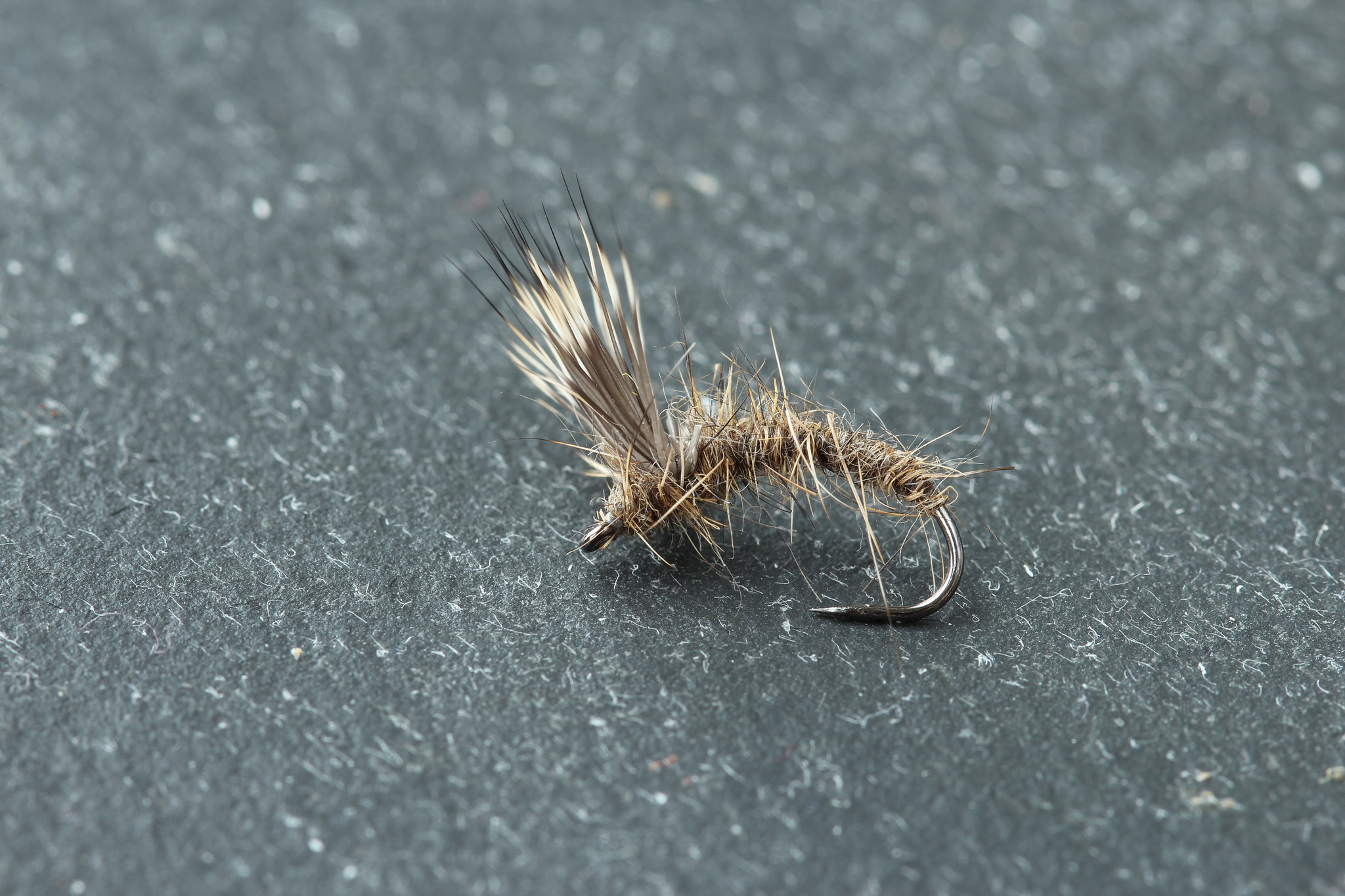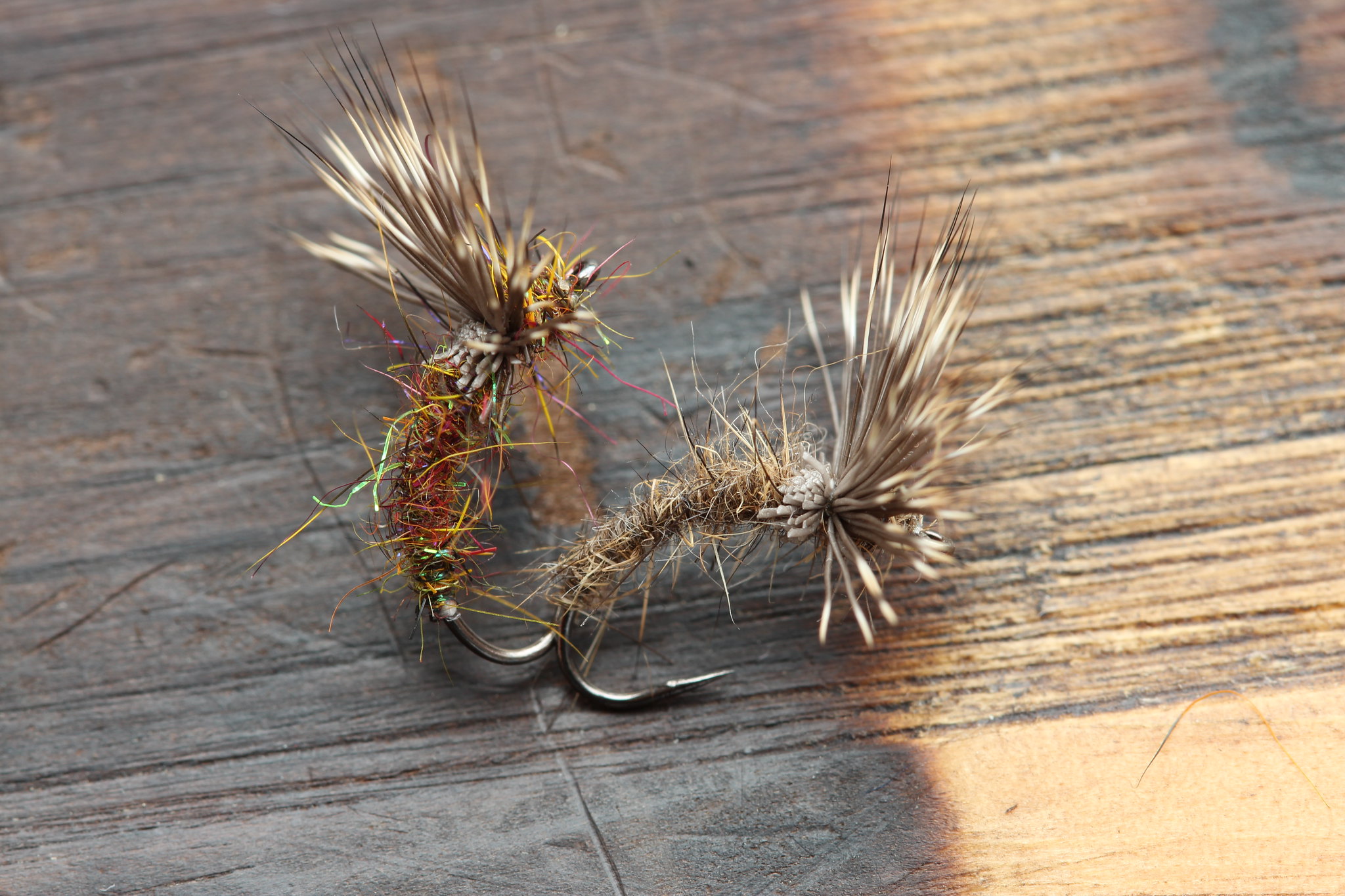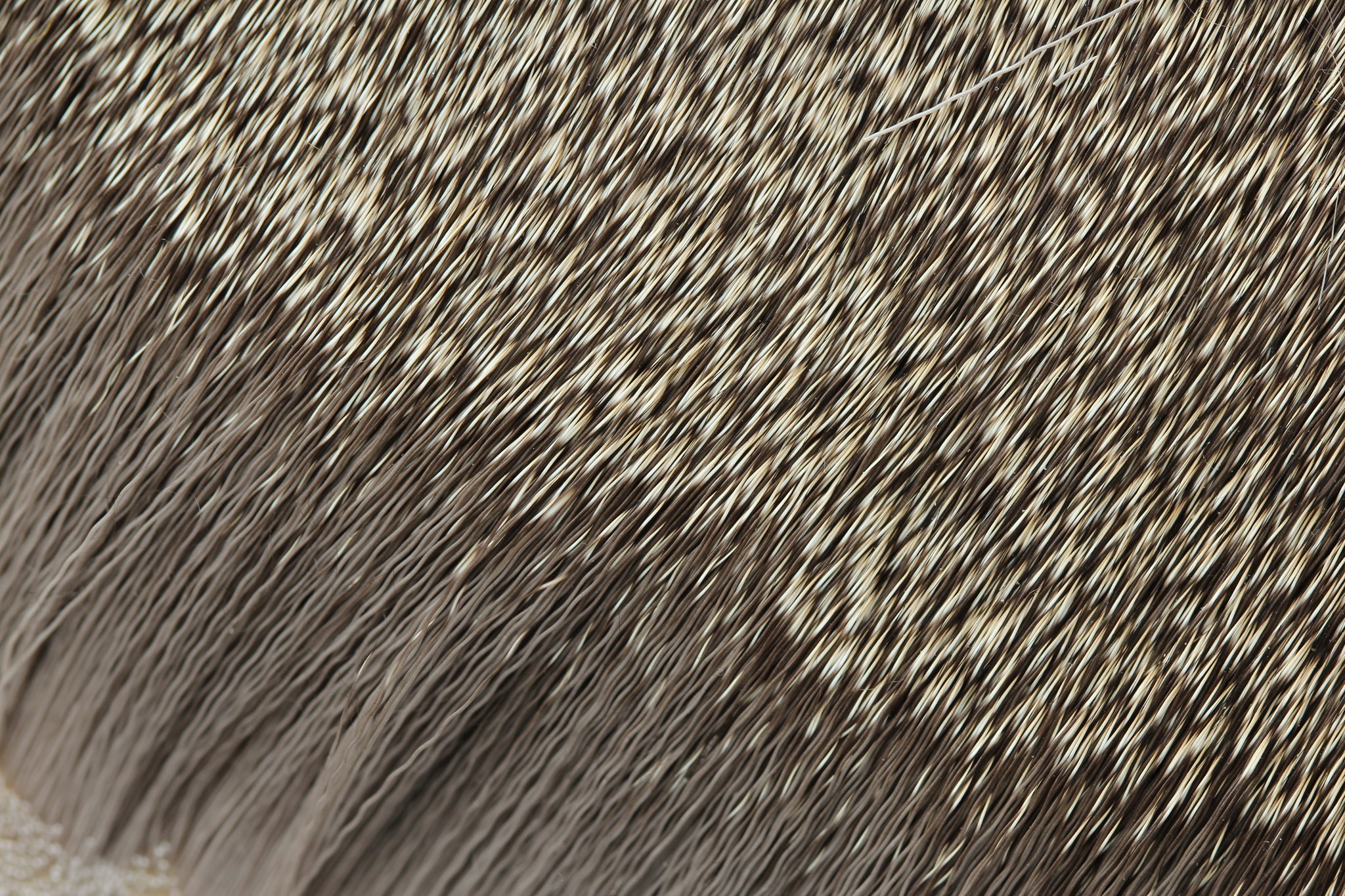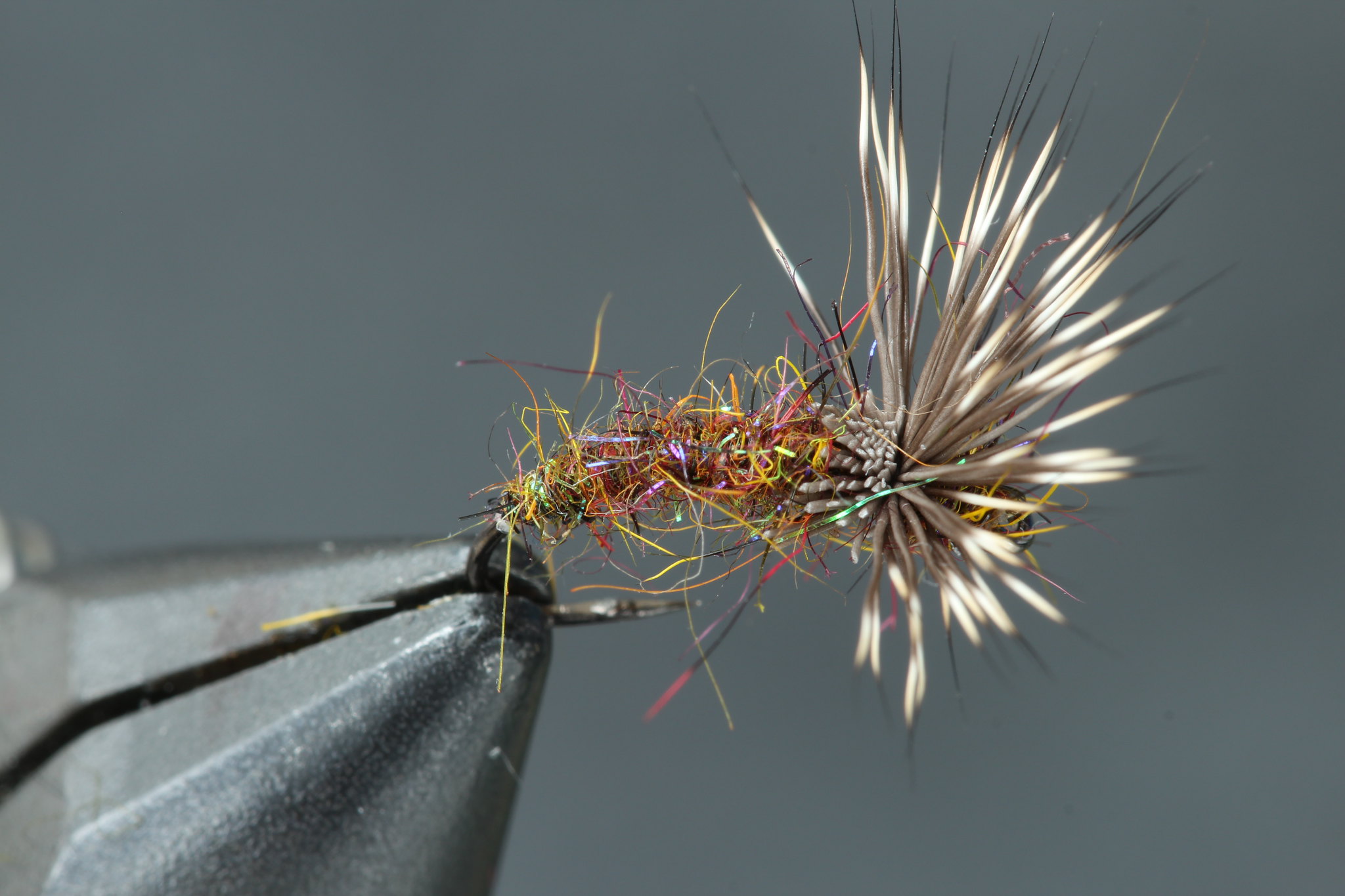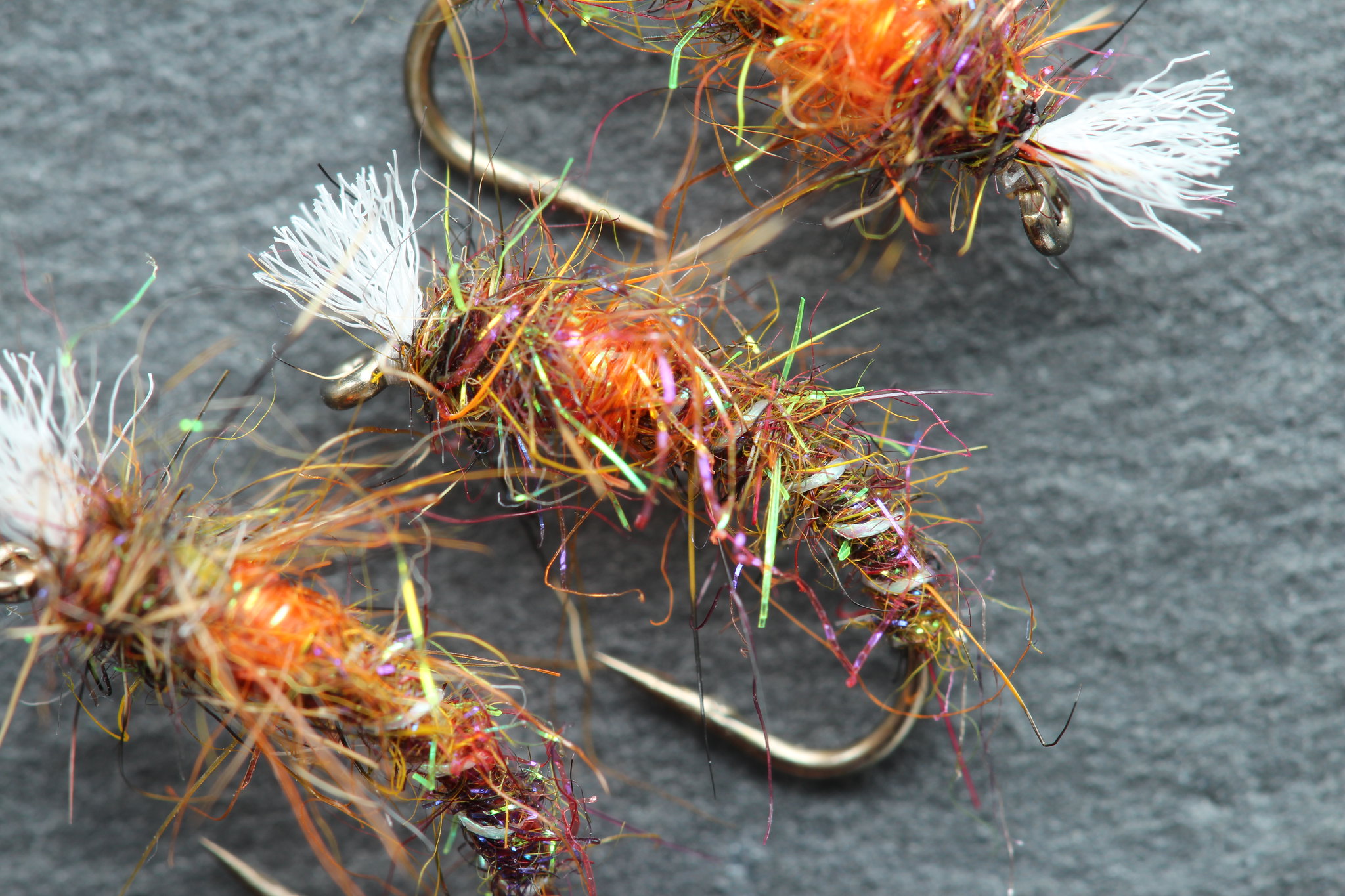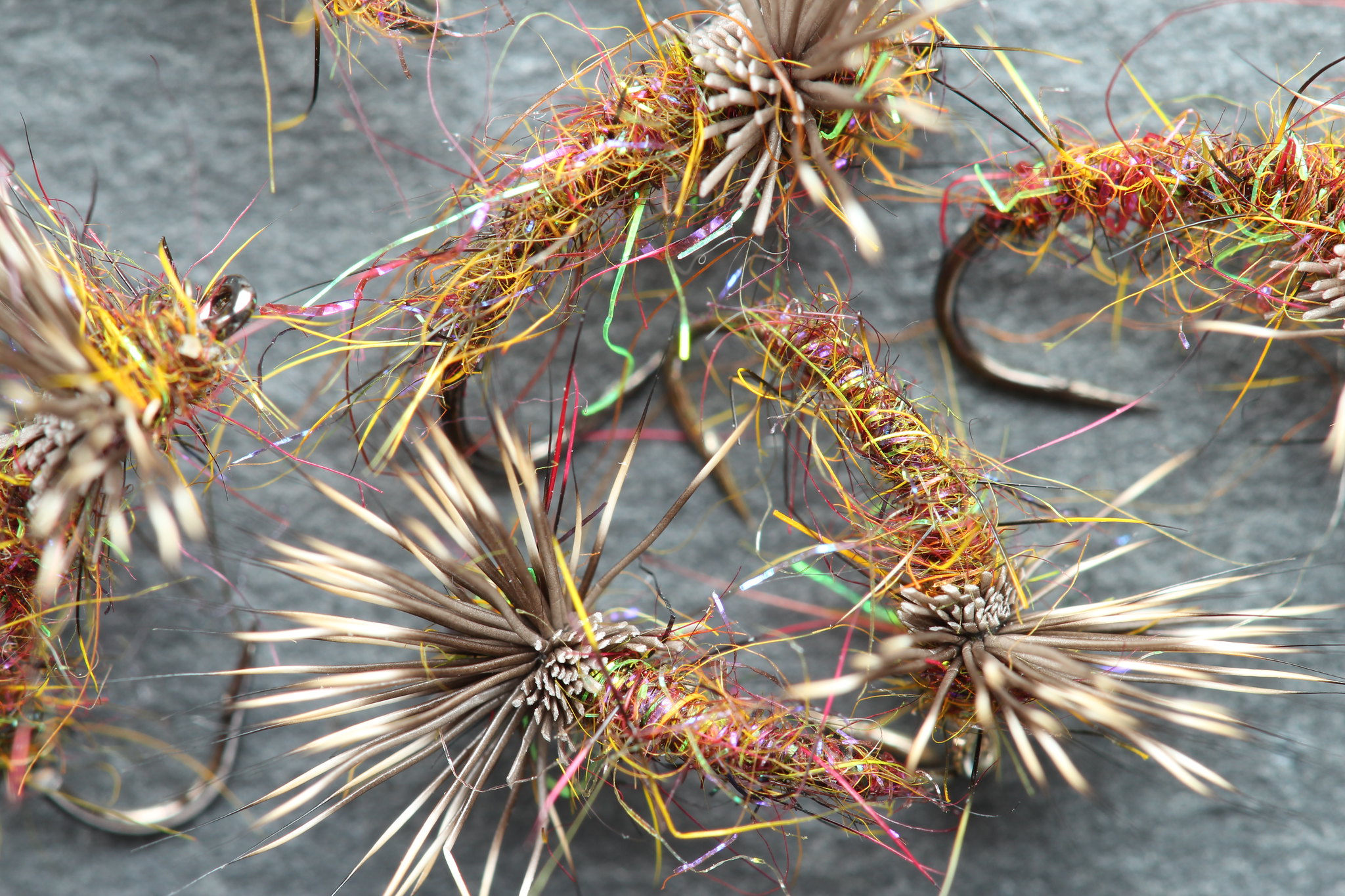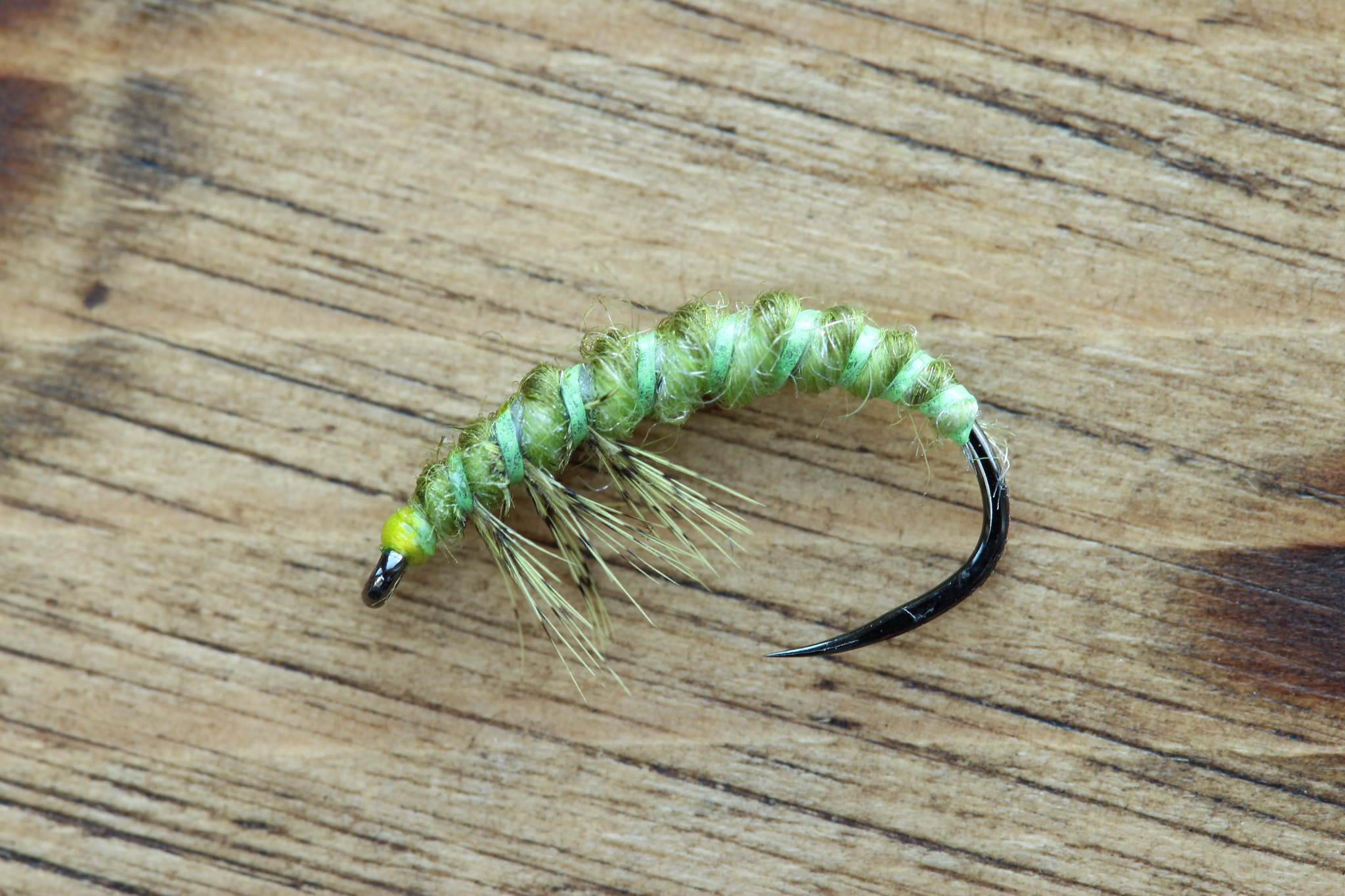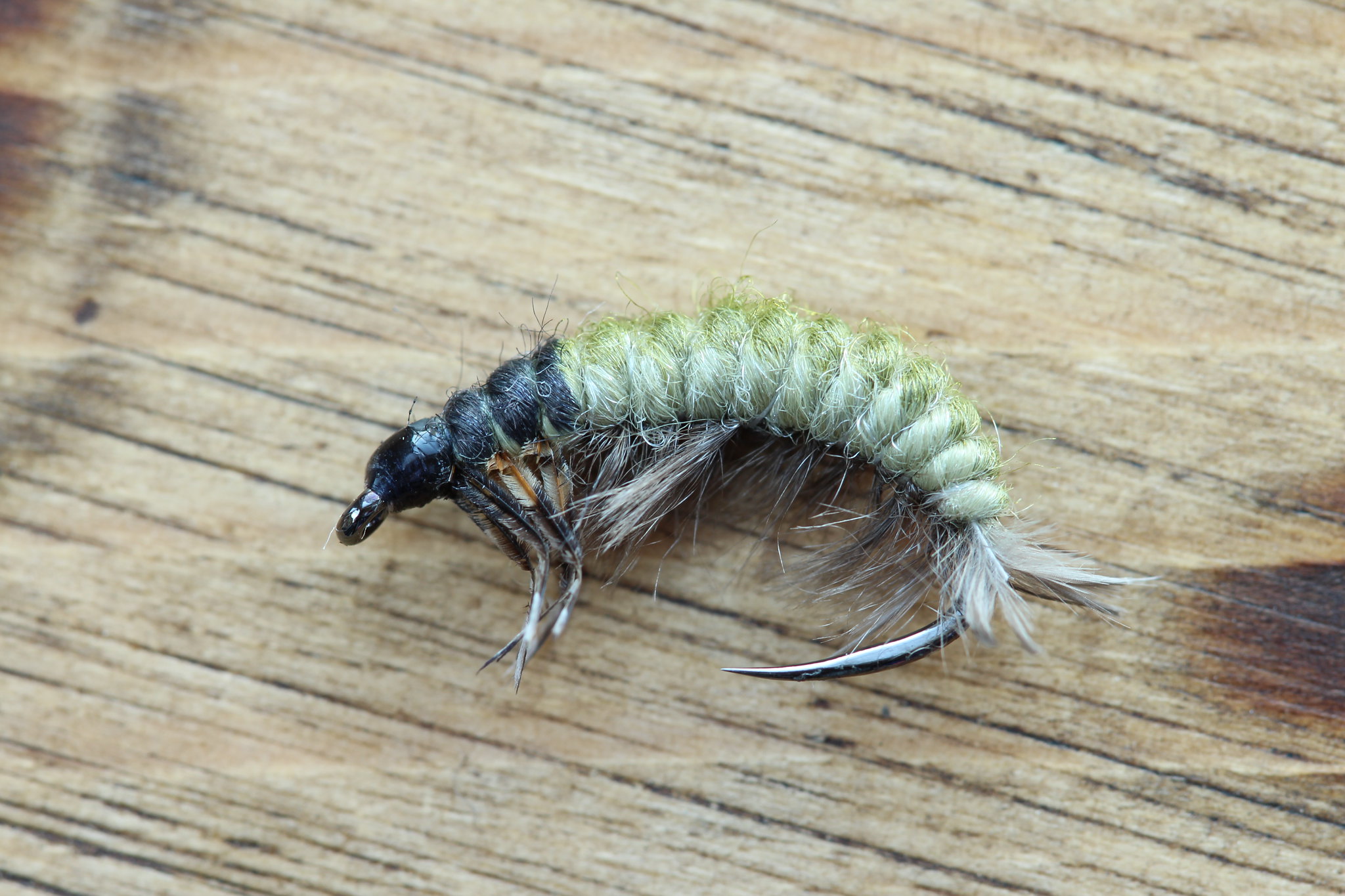 |
Oliver Edwards Heptagenid nymph, a
staple fly for me in the past. |
Having always had a predilection for close copy, realistic flies, I lent towards those patterns which may seem too much bother to be worth tying, only to possibly - or eventually - lose it in a tree or submerged obstruction. There's no doubt simpler patterns are equally and possibly more effective - depending on your view of things - and at times I used flies that were more impressionistic. Despite there being easier, quicker flies to tie, my preference was to use ones that could take up to twenty minutes to tie. It was possibly a confidence thing; we all fish better with a healthy dose of confidence and I guess I was guilty in the past of thinking scruffy, uncomplicated patterns couldn't be as good or better than the more realistic ones I used.
 |
Oliver Edwards Baetis nymph, still regularly used
to deadly effect. |
There is one fly that has completely changed my view. It hasn't diminished my love to tie intricate, realistic patterns, but they no longer dominate my fly-box. This fly has caught me a huge variety of species from the expected trout and grayling to a wide range of coarse fish species.
It was when watching the urban fly fishing DVD produced by Fish On productions, that I came across JP's caddis pupa. Without realising, I had been tying it slightly differently as I had been tying the hackle behind the bead rather than behind the thorax. This is certainly down to me not paying enough attention to the pattern on the video, although I have purposely changed the ribbing, abdomen and thorax to different materials - very much a variant - it is essentially the same fly and it's effectiveness definitely hasn't been diminished by these small changes.
 |
| My variant of JP's pupa, the hackle tied in the right place, behind the thorax. |
The most successful colour for me has been the cream bodied one, the green version catches occasionally, though I often find myself fishing just the cream one. A thick brown coloured wire provides a high contrast against the light abdomen colour enhancing the segmentation effect. The hackle is partridge, the thorax is squirrel dubbing - grey or fox - it doesn't really matter which; again this is different to the original pattern which incorporates the same dubbing as the abdomen. As a rule I tie it in sizes 12 to 14 with 2.5mm and 2mm tungsten beads respectively. To give more options larger and smaller beads can be used; in fact this summer - because of low water flows - I was forced to tie some up with copper brass beads, as tungsten was simply too heavy and affected presentation; I ought to tie some without a bead of any sort for use in skinny water and low flows.
 |
The JP Pupa has caught me three barbel this year, this first time I have caught
this species on the fly. |
The versatility of this fly is further demonstrated by the many different ways you can use it. I have successfully targeted sighted fish, generally casting upstream and to one side of the visible fish. The plop of the fly landing alerts the fish to its presence - so don't worry too much if the fly lands off course - often this results in an immediate inspection, and with luck an immediate take. You can imagine what happens if that scenario doesn't unfold, a flat refusal to engage, the trout then becomes suspicious and any repeated casts causing the fish to flee. Of course the JP pupa is not always the right choice, but its effectiveness gives confidence that the majority of times it will catch you that fish. Be mindful about the size of fly and tungsten bead; if you use it to deceive sighted fish, a lighter bead is beneficial in the slower, smoother surfaced waters.
 |
| Another grayling succumbs to the charms of the JP pupa |
 |
| A plump chub, no other fly has caught me such a diverse number of species. |
By far the best way to use this pattern is as a team of flies searching faster sections of the river, the technique matters not, be it Czech style, European leader or good old upstream nymphing. Often two JP pupa's occupy the leader, a larger heavier one on the point below a smaller lighter fly on a dropper. As advocated by John Tyzack in the urban fly fishing DVD you can use two different colours to determine which one is best for that day and swap the least effective fly, in productive waters it's not uncommon to catch more than one fish at the same time.
 |
| This smashing 18" trout was caught on the JP pupa fished with a french leader. |
Not only is the fly simple to fish it is simple to tie.
 |
| A selection of pre-tied hooks with a floss under-body. |
I perhaps add an unnecessary step but I build up an under-body with floss. This allows me to dub the abdomen tighter meaning the rib doesn't disappear making it more prominent. I often do a batch of hooks with beads and under-bodies ready for when I need to fill gaps in my fly box.
Take a ready prepared grub hook; this is a Tiemco 2487. You can of course start the fly as a blank hook and bead. Tie on the thread - I'm using UTC70 - securely tie down the wire rib. This is 0.20mm coloured copper wire, equivalent to UTC brassie sized wire.
Once the rib is securely tied in, apply the dubbing to the thread - I use Fly-Rite poly dubbing, the colour is no, 25 cream variant.
Because of the floss under-body you won't need so much dubbing to give the right shape.
Wind the rib in evenly spaced turns.
Prepare a brown speckled partridge feather and tie in by the tip.
Wind the partridge hackle where the abdomen ends; you normally only get a couple of turns.
Dub a good quantity of squirrel dubbing - this is fox squirrel but grey will work just as well. Ensure you have a good mix of guard hair and underfur, I pluck the fur straight of the hide.
Wind the dubbing to create a thick thorax and tie off with a whip-finish or a few half-hitches
Once finished give the fly a good rough-up with a piece of velcro or tailor made dubbing brush to give the fly an enticing scruffy look.
This year I caught my biggest wild brown trout of 5lb 6oz, this fish measured approximately 24", and what did I catch it on - a JP pupa of course! No wonder I could survive if I only had one fly.
